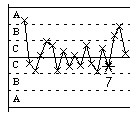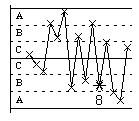Test 1 1 point more than 3s from center line
Test 2 9 points in a row on same side of center line
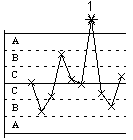
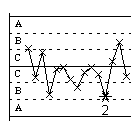
Test 3 Six points in a row, all increasing or all decreasing
Test 4 Fourteen points in a row, alternating up and down
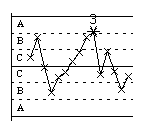
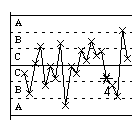
Test 5 2 out of 3 points > 2s from center line (same side)
Test 6 4 out of 5 points > 1s from center line (same side)
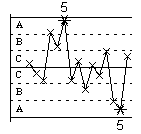
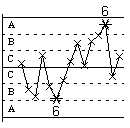
Test 7 15 points in a row within 1s of center line (either side)
Test 8 8 points in a row > 1s from center line (either side)
